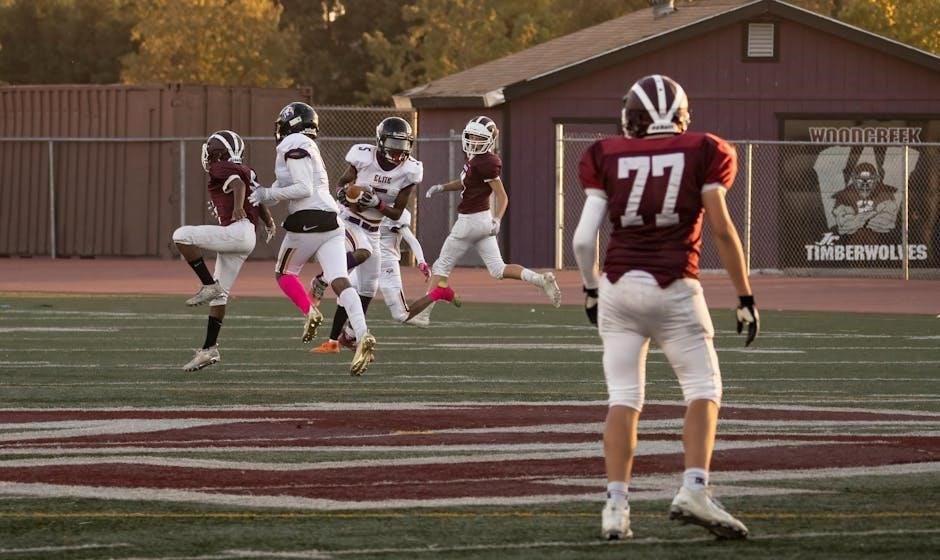The 3-2 zone defense is a versatile half-court strategy designed to disrupt opponents by denying wing entry points and forcing mid-range shots, making it a popular choice for coaches seeking to control game tempo and limit scoring opportunities effectively.
1.1 Overview of the 3-2 Zone Defense Strategy
The 3-2 zone defense is a strategic defensive system used in basketball to disrupt opponents’ offensive flow. It features three defenders at the top and two in the post, creating a balanced alignment. This setup aims to deny penetration, contest mid-range shots, and force difficult passes. Coaches often employ this strategy to control game tempo and limit scoring opportunities, making it a valuable tool in specific offensive matchups.
1.2 Historical Context and Popularity in Basketball
The 3-2 zone defense has gained prominence in modern basketball, particularly in college and high school levels, for its ability to disrupt offensive rhythm. Coaches often adopt this strategy to counter strong post players or dribble-first offenses, as seen in its successful implementation by programs like Syracuse. Its popularity stems from its flexibility and effectiveness in specific matchups, making it a go-to defensive tactic for controlling tempo and limiting scoring opportunities.

Strengths of the 3-2 Zone Defense
The 3-2 zone defense excels at disrupting opponents’ offensive flow, limiting dribble penetration, and forcing teams to rely on passing and mid-range shooting, reducing high-percentage scoring opportunities.
2.1 Disrupting Opponents’ Offensive Structure
The 3-2 zone defense effectively disrupts opponents by denying entry points to the wings, forcing offenses to operate through mid-range areas. This strategy limits the ability to initiate plays from the perimeter, creating confusion and reducing the flow of their offensive sets. By forcing teams to rely on skip passes or mid-range shots, the defense takes away high-percentage scoring opportunities and controls the game tempo.
2.2 Limiting Dribble Penetration and Forcing Passes
The 3-2 zone defense excels at minimizing dribble penetration by reducing driving gaps, forcing opponents to rely on passing. This structure compels ball handlers to move the ball laterally or skip pass, creating opportunities for defensive interceptions. By congesting the paint and perimeter, the defense disrupts rhythm and forces contested shots, enhancing overall defensive efficiency and control.
Weaknesses of the 3-2 Zone Defense
The 3-2 zone defense can be vulnerable to mid-range and 3-point shooting, as well as passive play, allowing smart offenses to exploit defensive gaps effectively.
3.1 Vulnerability to Mid-Range and 3-Point Shooting
The 3-2 zone defense can be exploited by teams with accurate mid-range and 3-point shooters, as its structure may leave gaps in perimeter coverage. Opponents can capitalize on these weaknesses by moving the ball to open shooters, especially in the corners or high post areas. Smart offenses often target these vulnerabilities to counteract the defensive pressure.
3.2 Potential for Passive Defensive Play
The 3-2 zone defense can lead to passive play if defenders fail to actively pressure the ball or anticipate offensive moves. Over-reliance on positional alignment may result in stale defensive performance, allowing opponents to exploit open shooting lanes or driving opportunities. Coaches must emphasize active rotations and player engagement to avoid complacency and maintain defensive intensity.
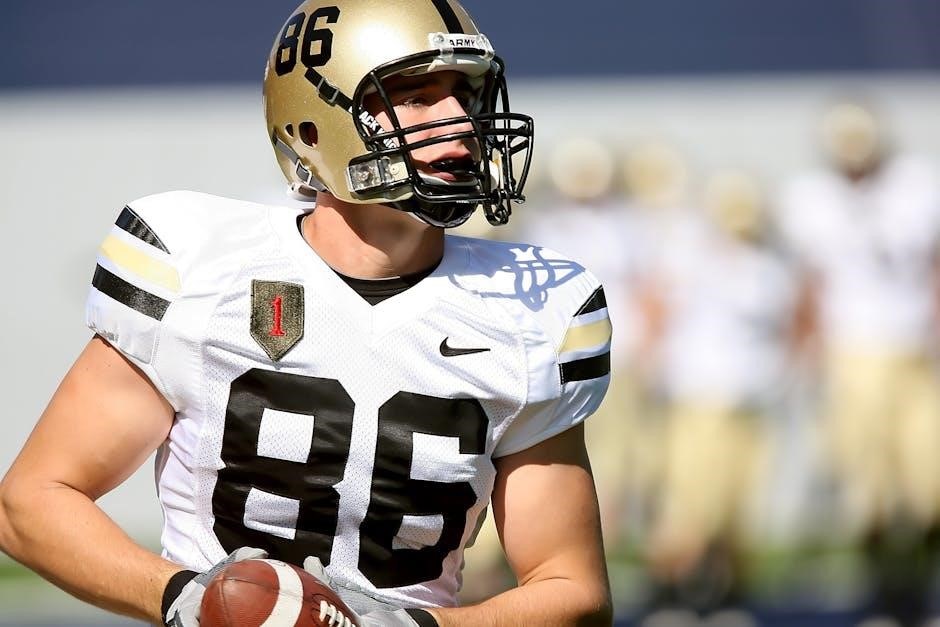
Personnel Considerations for the 3-2 Zone
The 3-2 zone defense requires smart, mobile players who can adapt quickly. Key roles include a point defender to pressure the ball, wings for versatility, and post players to protect the paint.
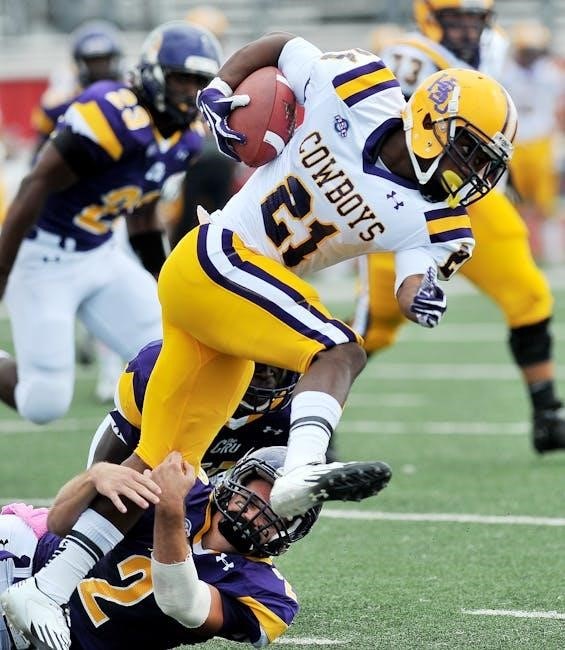
4.1 Importance of Smart and Mobile Players
The 3-2 zone defense relies heavily on intelligent and agile players who can quickly adapt to ball movement. Smart players are essential for understanding rotations, anticipating offensive moves, and maintaining defensive discipline; Mobile players ensure gaps are covered, allowing the defense to collapse effectively on post threats while maintaining perimeter containment. This combination of smarts and athleticism is crucial for the zone’s success.
4.2 Key Roles: Point, Wings, and Post Players
In the 3-2 zone defense, the point player is vital for ball pressure and directing the defense. Wings must be agile to cover perimeter threats and support the point, while post players anchor the paint, protecting the rim and securing rebounds. Each role requires distinct skills, ensuring a balanced and effective defensive structure that minimizes offensive opportunities.
Rotations in the 3-2 Zone Defense
The 3-2 zone defense relies on precise rotations, with the point player moving to the ball and wings rotating to cover open areas, ensuring balanced defensive positioning.
5.1 Basic Rotation Principles
In the 3-2 zone defense, rotations begin with the point player moving to the ball, while wings shift to cover open areas. The defense protects the paint and mid-range, ensuring balanced positioning. Players rotate as a unit, communicating to fill gaps and contest shots, with quick adjustments based on ball movement to maintain defensive integrity and limit scoring opportunities effectively.
5.2 Advanced Rotation Strategies Against Specific Offenses
Against dribble-first offenses, the 3-2 zone employs aggressive traps at the top to disrupt rhythm. For teams with strong post players, rotations focus on quick collapses while maintaining perimeter coverage. Advanced strategies include anticipatory shifts and help-and-recover techniques, ensuring defensive stability while countering specific offensive strengths, such as back-to-the-basket threats or outside shooting, by tailoring rotations to exploit weaknesses in the opponent’s attack.
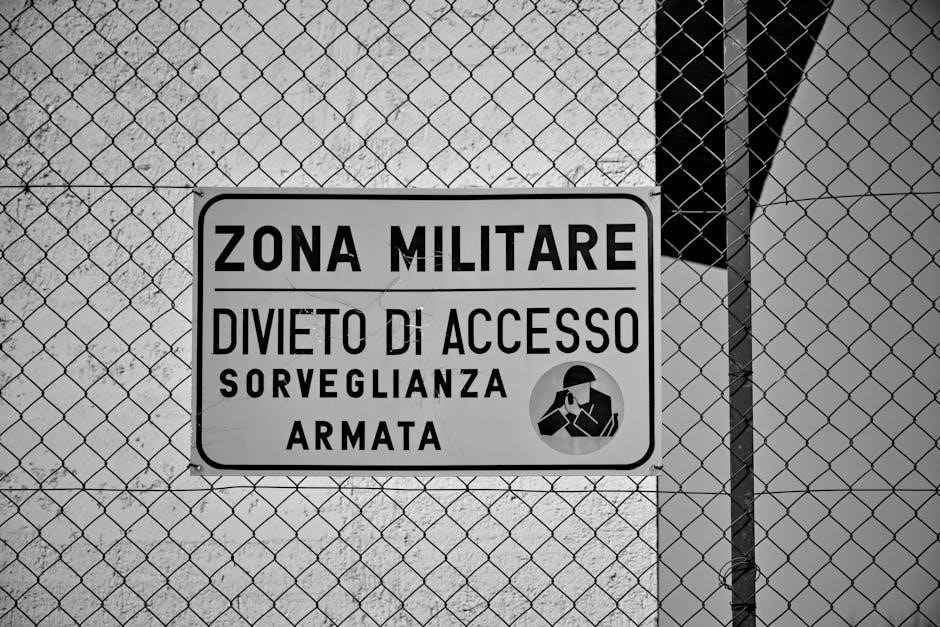
Trapping Options in the 3-2 Zone
The 3-2 zone allows for selective trapping to force turnovers without overextending. Trapping disrupts the opponent’s offensive flow, creating chaos and opportunities for defensive gains while maintaining stability.
6.1 When and How to Trap Effectively
Trapping in the 3-2 zone is most effective when targeting the point of attack or against teams reliant on dribble penetration. Coaches should trap selectively to avoid overextending the defense, using the top two defenders to pressure the ball. This strategy forces turnovers and disrupts rhythm, while the remaining players adjust to maintain defensive balance and protect vulnerable areas. Timing and aggression are key to success.
6.2 Balancing Trapping and Defensive Stability
Balancing trapping and stability in the 3-2 zone requires precise execution. Overtrapping can expose defensive gaps, while passive play negates pressure. Coaches must emphasize quick rotations and communication to protect vulnerabilities. Trapping should target high-risk areas without compromising the back line, ensuring defenders recover swiftly. This balance maintains defensive integrity while applying disruptive pressure on the opponent.
Using the 3-2 Zone Against Specific Offensive Strategies
The 3-2 zone defense is strategically employed against various offensive tactics. It effectively counters back-to-the-basket post players by collapsing defenders to disrupt post play. Against dribble-first offenses, it limits driving lanes, forcing offenses to rely on passing and mid-range shots. This adaptive defense adjusts to specific threats while maintaining overall stability.
7.1 Countering Back-to-the-Basket Post Players
The 3-2 zone defense excels against back-to-the-basket post players by collapsing defenders into the paint, disrupting scoring opportunities. The three defenders at the top apply pressure, forcing the ball to the mid-range area. This alignment limits easy post entries and contested shots, ensuring the defense remains balanced while neutralizing dominant post threats effectively.
7.2 Defending Against Dribble-First Offenses
The 3-2 zone defense effectively counters dribble-first offenses by minimizing driving lanes and forcing the ball to the mid-range area. The three top defenders apply pressure, disrupting penetration, while the bottom two protect the paint. Active rotations and communication are crucial to contest shots and anticipate passes, ensuring balanced defense. Smart, mobile players excel in this system, neutralizing offensive rhythm and exploiting potential turnovers.
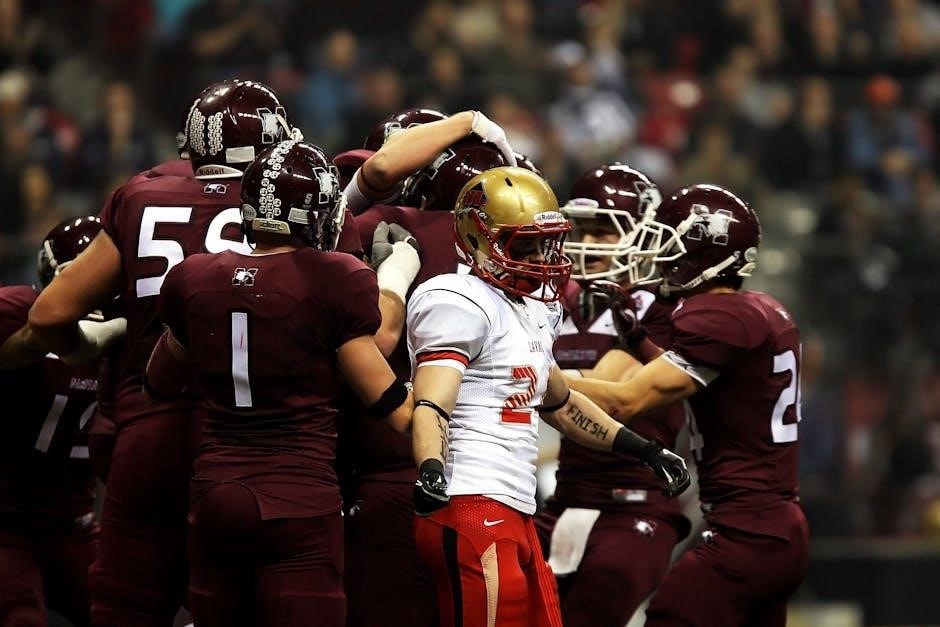
Countering the 3-2 Zone Defense
Opponents can exploit the 3-2 zone by using effective ball movement and player movement to create gaps and open shots, particularly in the mid-range area and corners.
8.1 Offensive Strategies to Exploit the 3-2 Zone
To counter the 3-2 zone, offenses utilize quick ball movement and player movement to create gaps. Teams often attack the mid-range area and corners, where the zone is vulnerable. Using a high post player to distribute the ball and shooting from open spots can disrupt the defensive structure. Passive defense from the 3-2 zone can be exploited with precise passing and quick decisions to find open shooters or driving lanes.
8.2 Using Player Movement and Passing to Break the Zone
Exploiting the 3-2 zone requires precise passing and disciplined player movement. Teams can use a high post player to distribute the ball effectively, attacking the mid-range and corners where the zone is most vulnerable. Overloading one side of the court forces defensive rotations, creating opportunities for open shots or driving lanes. This strategy disrupts the zone’s balance and generates scoring chances.
Comparing the 3-2 Zone to Other Zone Defenses
The 3-2 zone differs from the 2-3 zone in its strategic alignment and player responsibilities, offering unique advantages in disrupting offenses and protecting the interior while challenging perimeter shots.
9.1 Differences from the 2-3 Zone Defense
The 3-2 zone defense differs from the 2-3 zone in its alignment and strategic focus. The 3-2 features three defenders at the top, providing stronger perimeter protection, while the 2-3 emphasizes interior defense. The 3-2 is particularly effective against teams with dominant post players or dribble-first offenses, as it allows for quicker collapses and disrupts offensive flow.
9.2 Synergy with the 1-2-2 Ball Press
The 3-2 zone defense pairs seamlessly with the 1-2-2 ball press, creating a cohesive defensive system. This combination disrupts opponents’ offensive flow by forcing turnovers and controlling tempo. The 1-2-2 press complements the 3-2 zone by applying immediate pressure, while the zone provides stability against penetration and post threats, ensuring a balanced and dominant defensive approach.

Special Situations in the 3-2 Zone Defense
The 3-2 zone defense must adapt to unique in-game scenarios, such as defending inbounds plays and end-of-game possessions, requiring precise adjustments to maintain defensive integrity and effectiveness.
10.1 Defending Inbounds and Baseline Out-of-Bounds Plays
Inbounding situations require the 3-2 zone defense to adjust its alignment, with the top three players pressuring the ball and receivers. Guards must disrupt the inbounds pass, forcing the ball to non-threatening areas. Post players should protect the basket while staying alert for flash cuts to the high post. Clear communication and quick rotations are essential to maintain defensive integrity in these critical moments.
10.2 Adjustments for End-of-Game Scenarios
In end-of-game situations, the 3-2 zone defense may require strategic adjustments, such as switching to man-to-man or applying full-court pressure. Coaches often align the top three players tighter to protect the 3-point line while ensuring the posts safeguard the paint. Clear communication and timeout strategies are critical to disrupt the opponent’s final play and secure defensive stops, preserving the game outcome.
Coaching Tips for Implementing the 3-2 Zone
Emphasize precise player positioning, clear communication, and disciplined rotations. Use drills to refine assignments and reactions, ensuring players understand their roles in disrupting the opponent’s offense effectively.
11.1 Drills to Improve Zone Defense Fundamentals
Implement drills like shell drills to practice rotations and closeouts, and ball movement exercises to simulate game-like scenarios. Focus on reaction drills to improve quick decision-making and positioning drills to ensure proper alignment. These drills enhance players’ ability to anticipate and respond effectively, building a cohesive and reactive zone defense capable of disrupting opponents’ offensive flow consistently.
11.2 Communicating Defensive Assignments Effectively
Clear communication is vital in the 3-2 zone defense. Players must verbalize ball movement and cutting opponents to ensure alignment and rotations. Assign a point player to direct the defense, while wings and posts communicate help-side responsibilities. Use hand signals and verbal cues to maintain order and adapt to offensive shifts, ensuring every defender understands their role and reacts seamlessly as a unit.
Case Studies and Real-Game Applications
The 3-2 zone defense has been successfully implemented in college basketball, notably by Syracuse, and is widely used in high school and youth leagues for its versatility and effectiveness.
12.1 Successful Use of the 3-2 Zone in College Basketball
The 3-2 zone defense has been effectively utilized in college basketball, particularly by programs like Syracuse, to disrupt opponents’ offensive flow. Coaches often employ it against teams with dominant post players or dribble-first offenses, as it allows quick collapses and forces mid-range shots. Its adaptability and ability to control tempo make it a favored strategy in competitive collegiate matchups.
12.2 High School and Youth Basketball Applications
The 3-2 zone defense is highly effective in high school and youth basketball, where it simplifies defensive responsibilities for less experienced players. It limits dribble penetration and forces opponents to rely on mid-range shooting, which is often less consistent at younger levels. This strategy also helps develop basic defensive principles and team cohesion, making it a valuable tool for coaches building foundational skills in their players.
The 3-2 zone defense is a strategic and versatile system that effectively disrupts opponents, making it a valuable tool for coaches to control game tempo and limit scoring opportunities.
13.1 Final Thoughts on the 3-2 Zone Defense
The 3-2 zone defense is a cornerstone of modern basketball strategy, offering unparalleled flexibility and disruptive potential. Coaches can tailor it to counter various offensive schemes, from back-to-the-basket players to dribble-first offenses. Its effectiveness lies in its ability to control tempo and limit scoring opportunities, making it a valuable asset for any team. Smart, mobile players are essential to execute its intricate rotations and traps effectively.
13.2 When and Why Coaches Should Use This Strategy
Coaches should employ the 3-2 zone defense when facing teams with strong post players or dribble-first offenses, as it excels at collapsing defensively and limiting penetration; It’s ideal for controlling game tempo and forcing opponents into mid-range shots. This strategy is particularly effective against teams lacking reliable 3-point shooting, as it disrupts offensive flow and creates turnovers, giving teams a strategic edge in critical situations.
